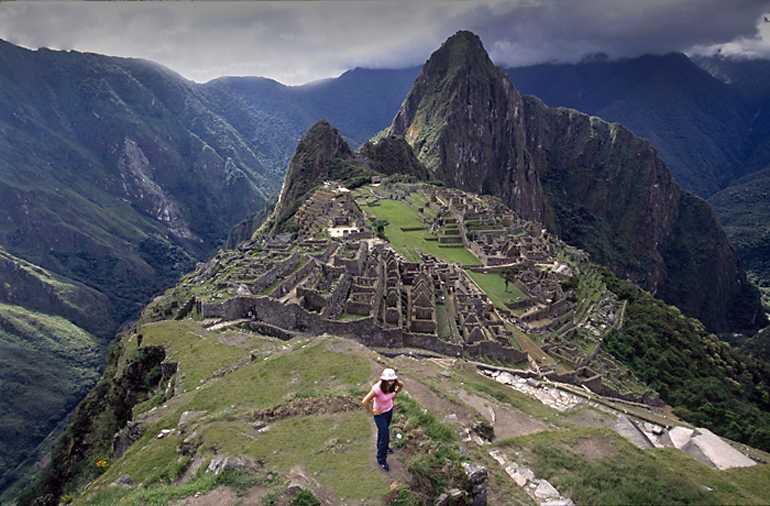
Tall city of stepped stone
High reef of human dawn
The fallen kingdom
Survives us all the while
Pablo Neruda
It is called the greatest archeological find of the 20th century, the "pyramids of the West." It did not take a genius to figure this out. Machu Picchu is the supreme showpiece, a hauntingly beautiful destination in an isolated setting overlooking the Urubamba Valley, at an altitude of 8,000 feet (see above). The Lost City of the Inca sits astride a "saddle" between two perfectly sculpted mountains: Machu Picchu (big mountain) and Huayna Picchu (little mountain, the peak on the other side of ruins in above photo). It is a setting fit for, even intended for, a god-king. This panorama demands comparison-Yosemite Valley, Grand Canyon, and yes, the pyramids of Egypt.
Here in a blanket of textured green cloud forest is an aberration sculpted by the hands of man. But this is no human stain on god's perfection. This is a high point of man's evolution, an "emerald city" carved out of stone and festooned with orchids, alpacas, and aprons of hanging terraces. Machu Picchu-alone, mysterious, and flawless-even the name has an elegant cadence. We are not disappointed!
Like Stonehenge, the name is a synonym for mystery. History tells us who built Rome's colosseum and why; also Egypt's pyramids and the great terra cotta army buried at Xian, in China. And, too, the Viking huts under sod roof at L'Anse aux Meadows, in Newfoundland. But at Machu Picchu scholars still wander the past. Speculation runs rampant. How did the Inca build this place and why? And why did they abandon it in less than a century after going to all that trouble? At Machu Picchu we feel the allure of a ghost town, the pain of broken dreams, and nostalgia, not just for what was, but for what might have been.